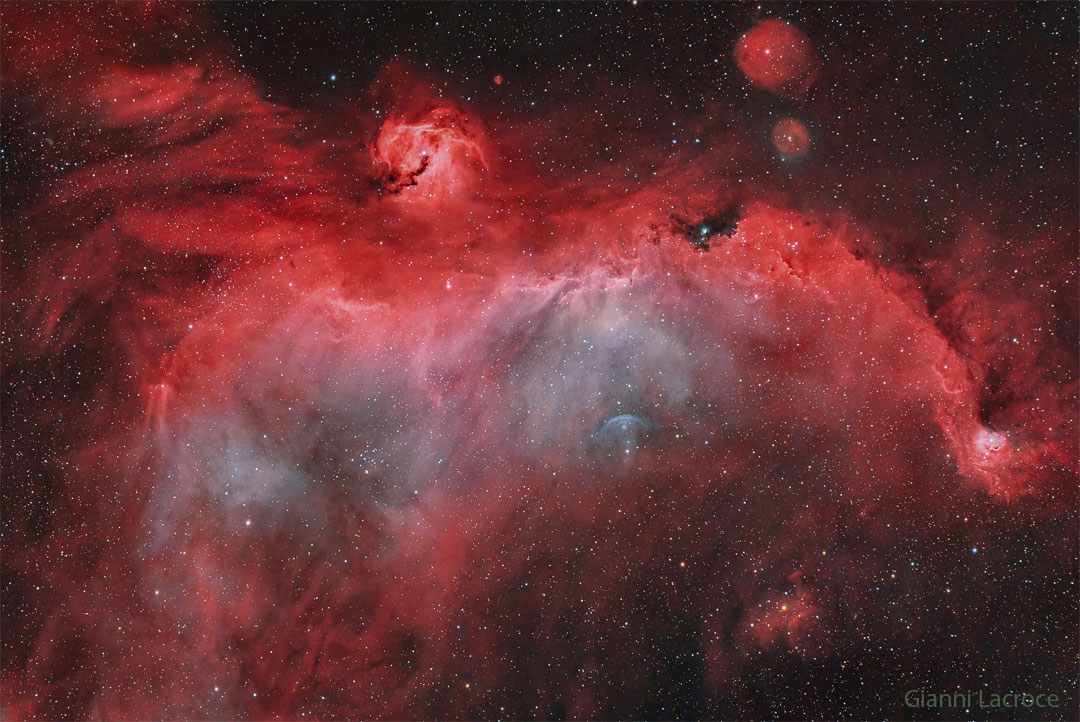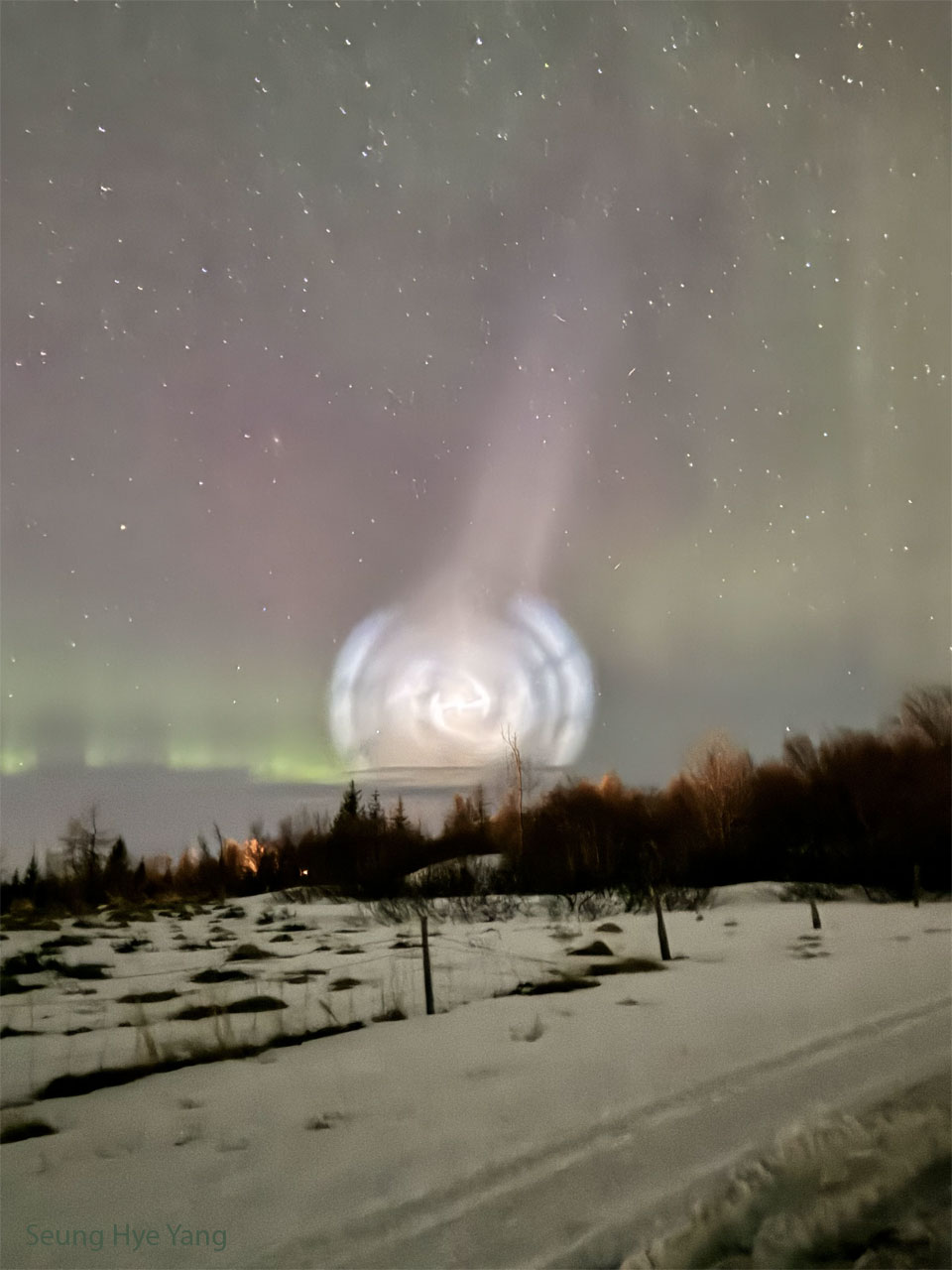
Nombre total de pages vues
16/03/2024
SANTé/MEDECINE - HISTOIRE - L'autopsie du corps humain durant la Renaissance

ASTRONOMY - ELT and the Milky Way
2024 March 16
Image Credit & License: European Southern Observatory - Courtesy: Jens Scheidtmann
Explanation: The southern winter Milky Way sprawls across this night skyscape. Looking due south, the webcam view was recorded near local midnight on March 11 in dry, dark skies over the central Chilean Atacama desert. Seen below the graceful arc of diffuse starlight are satellite galaxies of the mighty Milky Way, also known as the Large and Small Magellanic clouds. In the foreground is the site of the European Southern Observatory's 40-metre-class Extremely Large Telescope (ELT). Under construction at the 3000 metre summit of Cerro Armazones, the ELT is on track to become planet Earth's biggest Eye on the Sky.
15/03/2024
SANTé/MEDECINE - Cancer du sein : attention à ces 5 symptômes - Une inversion du mamelon (2/5)

ASTRONOMY - Portrait of NGC 1055
2024 March 15
Image Credit & Copyright: Dave Doctor
Explanation: Big, beautiful spiral galaxy NGC 1055 is a dominant member of a small galaxy group a mere 60 million light-years away toward the aquatically intimidating constellation Cetus. Seen edge-on, the island universe spans over 100,000 light-years, a little larger than our own Milky Way galaxy. The colorful, spiky stars decorating this cosmic portrait of NGC 1055 are in the foreground, well within the Milky Way. But the telltale pinkish star forming regions are scattered through winding dust lanes along the distant galaxy's thin disk. With a smattering of even more distant background galaxies, the deep image also reveals a boxy halo that extends far above and below the central bulge and disk of NGC 1055. The halo itself is laced with faint, narrow structures, and could represent the mixed and spread out debris from a satellite galaxy disrupted by the larger spiral some 10 billion years ago.
14/03/2024
SANTé/MEDECINE - Cancer du sein : attention à ces 5 symptômes - Un sein rouge et gonflé, chaud au toucher (1/5)

ASTRONOMY - Moon Pi and Mountain Shadow
2024 March 14
Image Credit & Copyright: Daniel Lopez (El Cielo de Canarias)
Explanation: What phase of the Moon is 3.14 radians from the Sun? The Full Moon, of course. Even though the Moon might look full for several days, the Moon is truly at its full phase when it is Pi radians (aka 180 degrees) from the Sun in ecliptic longitude. That's opposite the Sun in planet Earth's sky. Rising as the Sun set on March 9, 2020, only an hour or so after the moment of its full phase, this orange tinted and slightly flattened Moon still looked full. It was photographed opposite the setting Sun from Teide National Park on the Canary Island of Tenerife. Also opposite the setting Sun, seen from near the Teide volcano peak about 3,500 meters above sea level, is the mountain's rising triangular shadow extending into Earth's dense atmosphere. Below the distant ridge line on the left are the white telescope domes of Teide Observatory. Again Pi radians from the Sun, on March 25 the Full Moon will dim slightly as it glides through Earth's outer shadow in a penumbral lunar eclipse.
13/03/2024
SANTé/MEDECINE - HISTOIRE - 1561 : Ambroise Paré, le père de la chirurgie moderne

ASTRONOMY - The Seagull Nebula
2024 March 13
Credit & Copyright: Gianni Lacroce
Explanation: A broad expanse of glowing gas and dust presents a bird-like visage to astronomers from planet Earth, suggesting its popular moniker: the Seagull Nebula. This portrait of the cosmic bird covers a 1.6-degree wide swath across the plane of the Milky Way, near the direction of Sirius, the alpha star of the constellation of the Big Dog (Canis Major). Of course, the region includes objects with other catalog designations: notably NGC 2327, a compact, dusty emission and reflection nebula with an embedded massive star that forms the bird's head. Dominated by the reddish glow of atomic hydrogen, the complex of gas and dust clouds with bright young stars spans over 100 light-years at an estimated 3,800 light-year distance.
12/03/2024
ASTRONOMIE - Exoplanète

ASTRONOMY - A Galaxy-Shaped Rocket Exhaust Spiral
2024 March 12
Credit & Copyright: Seung Hye Yang
Explanation: What's that over the horizon? What may look like a strangely nearby galaxy is actually a normal rocket's exhaust plume -- but unusually backlit. Although the SpaceX Falcon 9 rocket was launched from Cape Canaveral in Florida, USA, its burned propellant was visible over a much wider area, with the featured photograph being taken from Akureyri, Iceland. The huge spaceship was lifted off a week ago, and the resulting spectacle was captured soon afterward with a single 10-second smartphone exposure, before it quickly dissipated. Like noctilucent clouds, the plume's brightness is caused by the Twilight Effect, where an object is high enough to be illuminated by the twilight Sun, even when the observer on the ground experiences the darkness of night. The spiral shape is likely caused by high winds pushing the expelled gas into the shape of a corkscrew, which, when seen along the trajectory, looks like a spiral. Stars and faint green and red aurora appear in the background of this extraordinary image.
ASTRONOMY - Simeis 147: The Spaghetti Nebula Supernova Remnant
2026 January 7 Simeis 147: The Spaghetti Nebula Supernova Remnant Image Credit & Copyright: Saverio Ferretti Explanation: Its popular ...

-
2022 September 26 All the Water on Planet Earth Illustration Credit: Jack Cook, Adam Nieman, Woods Hole Oceanographic Institution ; Data ...
-
2025 May 11 The Surface of Venus from Venera 14 Image Credit: Soviet Planetary Exploration Program , Venera 14 ; Processing & Copyri...




